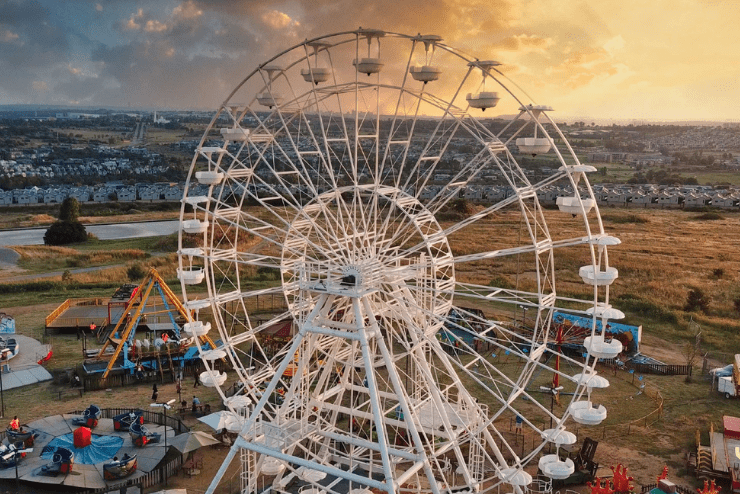Getting My Johannesburg North Attractions To Work
Table of ContentsRumored Buzz on Johannesburg North AttractionsThe Ultimate Guide To Johannesburg North AttractionsAll About Johannesburg North AttractionsJohannesburg North Attractions for DummiesIndicators on Johannesburg North Attractions You Should KnowLittle Known Questions About Johannesburg North Attractions.The Johannesburg North Attractions Diaries
You need to keep safety and security in mind and visitors need to continue to be alert at all times when in strange surroundings. Talk to the locals when you are in community to discover the area you are remaining in. Johannesburg North attractions. When on the road (this doesn't relate to purchasing malls and other protected settings) best general guidance is to attempt your ideal to look like a regional and to avoid presenting any kind of form of wealth
The Ultimate Guide To Johannesburg North Attractions
Professor Revil Mason O. J. (Thomson, 1946) explored the Witwatersrand's pre-colonial history. His historical job blew up the 'em pty land' misconception, according to which the region was lacking human habitation before the arrival of European inhabitants. In his magazines Prehistory of the Transvaal: A Record of Human Task (1962) and Beginnings of Black People of Johannesburg and the Southern Western Central Transvaal Advertisement 3501880 (1986 ), Teacher Mason showed the degree of social and financial growth in the area prior to Europeans established foot here.

Some Known Questions About Johannesburg North Attractions.
In 1878, David Wardrop located gold in quartz capillaries at Zwartkop, north of Krugersdorp. In 1881, Stephanus Minnaar came across gold on the farm Kromdraai, near the Cradle of Mankind.
In March 1886, an outcropping (soon to be called the Main Reef) was found, rather fortuitously, on Gerhardus Oosthuizen's farm Langlaagte. Some state that the Lancastrian coal miner George Pedestrian discovered this coral reef. An additional travelling English miner, George Harrison (who had previously operated in Australian mines) gotten a prospecting licence in regard of Langlaagte in May 1886.
He made a decision to carry on in a quest for greener pastures, and disposed of his Langlaagte claim for the handsome sum of 10. Alas: below lay the richest goldfield ever discovered. The exploration of this abundant auriferous coral reef prompted a gold thrill that signified completion of agrarian tranquillity in the southerly Transvaal.
It would certainly, within 6 years, come to be the biggest community in southerly Africa. Within a decade, it would certainly make the Z. A. R. up until after that an anarchical and bankrupt little state the wealthiest nation in Africa. By the millenium, the Z. A. R. was to exceed Russia, Australia and the USA of America to come to be the world's leading gold producer, generating greater than a quarter of the globe's gold.
Johannesburg North Attractions Fundamentals Explained
It was understood as Ferreira's Camp, named after Colonel Ignatius Ferreira. He was a Boer traveler upon whom the British authorities had bestowed the standing of Companion of one of the most Identified Order of St Michael and St George (entitling him to the post-nominal letters C. M. G.) in appreciation for his duty in the battle that had deposed the Pedi king Sekhukhune in 1879.
Two other camps were developed: Meyer's Camp on the farm Doornfontein, and Paarl go now Camp. The latter was nicknamed Afrikander Camp; several people from the Cape Nest settled there.

The Best Guide To Johannesburg North Attractions
This name obtained currency by word of mouth, such that the State Assistant verified the name to the Mining Commissioner on 9 October 1886. Stands in the village were auctioned on 8 December 1886. While some stands were cost 10, others were torn down browse this site for just sixpence.
2 years later, these erven were to alter hands for as much as 750 each. The tented camps decreased as a dorp of corrugated iron structures developed and broadened north of the mines located along the Key Reef Roadway. Areas such as Jeppe's Community (where working-class immigrants erected their homes) and Doornfontein (where the wealthy brand-new 'Randlords' started to build their opulent homes) were quickly contributed to the ever-expanding map of the community.
Johannesburg North Attractions Can Be Fun For Everyone
Aside from the road names, there were no indications of Johannesburg being situated in a Dutch-speaking nation. Years later on, C. W. Kearns O. J. (one of the initial young boys registered at St John's University in 1898) would certainly recall: 'A weird reality regarding Johannesburg was that, although it remained in the [Boer Republic], almost everyone talked English and also the my company Federal government servants addressed one in English, unless they were first addressed in the Taal (or Reduced Dutch)'.
Britain had an interest in ensuring ideal problems for gold production on the Witwatersrand, and that the gold was exported to London rather than Berlin a critical rendered all the more clamant by the Z. A. R.'s boosting toenadering with Germany. Mine owners got on a clash with President Kruger, whose plan of monopolistic concessions (usually provided to his cronies) avoided mining companies from acquiring materials of materials (specifically dynamite) and work by themselves, more affordable terms
Some Known Facts About Johannesburg North Attractions.
In 1890, the Volksraad had limited the franchise to white guys that had actually resided in the Z. A. R. for fourteen years or longer, therefore disqualifying a lot of the immigrants (that occurred to be the major factors to the fiscus). Nonetheless, agitation for the ballot was a plain pretext for promoting a different program; most uitlanders concerned themselves as short-term visitors and had no intention of continuing to be in the Z.